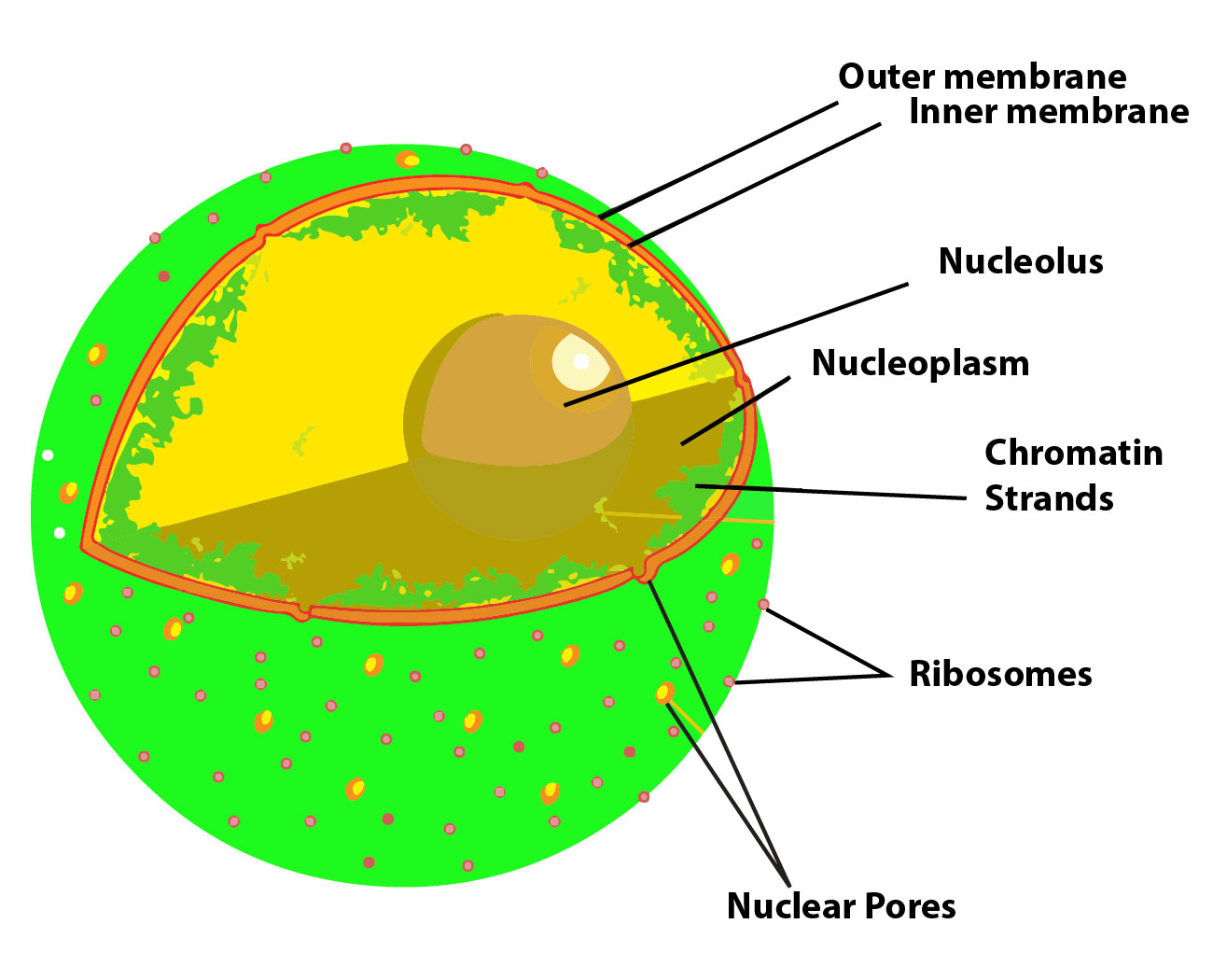
Nucleoli are rich in
(a) DNA and RNA
(b) RNA and proteins
(c) DNA
(d) RNA
Answer
473.1k+ views
Hint: Nucleolus (plural: nucleoli) is a structure found inside the nucleus that was identified using bright-field microscopy in 1830. It is seen that the egg cells of frogs that do not contain nucleolus cannot reproduce, thus proving the fact that nucleolus is essential for life.
Complete Step by Step Answer:
The nucleoli are the largest structures present inside the nucleus of a cell and they are nucleoprotein and spherical in nature. The nucleoli are rich in substances like proteins, DNA, and RNA. The process of ribosome biogenesis takes place in nucleolus which is the formation of ribosomes through the process of transcription of rDNA.

Since the nucleolus is involved in active ribosomal RNA synthesis, the cells that are associated with protein synthesis, have larger and more number of nucleoli present in them. Nucleoli are found in specific regions around the chromosomes which are known as nucleolar organizing regions.
Additional information:
- The fibrillar center (FC), the dense fibrillar component (DFC), and the granular component (GC) are the three regions into which the nucleolus is divided.
- The fibrillar region is the region of rDNA transcription.
- The proteins required for the process of rRNA formation such as fibrillarin are present in the dense fibrillar region.
- The granular region has other proteins such as nucleophosmin.
So, the correct option is ‘(b) RNA and proteins’.
Note:
- Nucleoli help during stressful conditions and are studied under treatment options for cancer chemotherapy.
- The nucleolus is not a membrane- bound structure and thus the contents of nucleoplasm and nucleolus are the same.
- Nucleolus is produced by the nucleolar organizing regions (NOR) present in a specific chromosome.
Complete Step by Step Answer:
The nucleoli are the largest structures present inside the nucleus of a cell and they are nucleoprotein and spherical in nature. The nucleoli are rich in substances like proteins, DNA, and RNA. The process of ribosome biogenesis takes place in nucleolus which is the formation of ribosomes through the process of transcription of rDNA.

Since the nucleolus is involved in active ribosomal RNA synthesis, the cells that are associated with protein synthesis, have larger and more number of nucleoli present in them. Nucleoli are found in specific regions around the chromosomes which are known as nucleolar organizing regions.
Additional information:
- The fibrillar center (FC), the dense fibrillar component (DFC), and the granular component (GC) are the three regions into which the nucleolus is divided.
- The fibrillar region is the region of rDNA transcription.
- The proteins required for the process of rRNA formation such as fibrillarin are present in the dense fibrillar region.
- The granular region has other proteins such as nucleophosmin.
So, the correct option is ‘(b) RNA and proteins’.
Note:
- Nucleoli help during stressful conditions and are studied under treatment options for cancer chemotherapy.
- The nucleolus is not a membrane- bound structure and thus the contents of nucleoplasm and nucleolus are the same.
- Nucleolus is produced by the nucleolar organizing regions (NOR) present in a specific chromosome.
Recently Updated Pages
Master Class 11 Economics: Engaging Questions & Answers for Success

Master Class 11 Business Studies: Engaging Questions & Answers for Success

Master Class 11 Accountancy: Engaging Questions & Answers for Success

Master Class 11 English: Engaging Questions & Answers for Success

Master Class 11 Computer Science: Engaging Questions & Answers for Success

Master Class 11 Maths: Engaging Questions & Answers for Success

Trending doubts
Which one is a true fish A Jellyfish B Starfish C Dogfish class 11 biology CBSE

State and prove Bernoullis theorem class 11 physics CBSE

1 ton equals to A 100 kg B 1000 kg C 10 kg D 10000 class 11 physics CBSE

In which part of the body the blood is purified oxygenation class 11 biology CBSE

One Metric ton is equal to kg A 10000 B 1000 C 100 class 11 physics CBSE

Difference Between Prokaryotic Cells and Eukaryotic Cells




